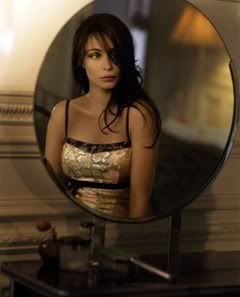Perfume Shrine embarked on a mission:
to disect and discuss one of the bastions of chypre: la maison Dior in its former glory, when under the baguette of Edmond Roudnitska and Paul Vacher it produced classics that remain up there in the pantheon for all of us to worship.
Edmond Roudnitska is probably the one name you simply need to drop if you want to appear as if you have at least a passing knowledge of scent. Of course name dropping is completely ridiculous, especially when used to prove that someone knows anything about anything, but the practice does not diminish the value of this Ukranian émigré who started as an assistant to Ernest Beaux; the Russian perfumer to the czars who made the legend of Chanel parfums almost single-handedly. Did his apprenticeship serve him well? More than that.
Roudnitska became much more than an artist of high calibre in the fragrant galaxy or a point of reference. He also
pondered theoretically on the subject of perfume through his prolific writing and his polemic to establish perfume creation as an art form, especially in his book “Le parfum” in the “Que sais-je?” series (now out of print), “L’ésthetique en question” and “L’intimité du parfum”. But the dialectic he inaugurated has survived in his dictum (from a speech given on 20 November 1952 in Paris):
“For it to be considered Art, smell ceases to be a sense to be satisfied to rather become a medium. Thus perfumes will be spiritual compositions and the public will be able to initiate themselves into olfactive forms”.
For him it is not the sense of smell or the materials that are important, but rather the spirit which, playing with forms, will coax the latter with the aid of the former. This point of view had been forgotten for decades when perfumes came out with the eye more on the commercial than the artistic, only to be revived when certain niche companies came into the fore dynamically. Roudnitska bases his axiom in the comparison to other art forms (as mapped out by Etienne Souriau).
“A beautiful perfume is the one which gives us a shock: a sensory one followed by a psychological one. A beautiful perfume is one with happy proportions and an original form”.
One criterion is the pre-thought-out process that precedes composition, contrasting popular myths about “happy accidents” (too much aldehydes in
Chanel No.5, vanillin in
Jicky producing the basic accord for
Shalimar) and certainly the rumour that Jean Carles composed by instinct rather than plan. Therefore
artistic perfume composition should focus in evoking odours in an abstract manner. In this he found an eminable successor in Jean Claude Ellena who composes with pen and paper at hand and not concocting alloys at some secret lab. Emphasis on the interaction of materials with one another is also highly regarded.
Additionally, perfume composition should be unique, much like a musical piece, and protected against “plagiarism”. To this he was adamant. He would be sadly disillusioned to find out that nowadays there are hundreds of fragrances that are composed with gas chromatograph and mass spectometer at the side of the unlucky recipient of a perfume brief from a big company: that is, to replicate a best-selling fragrance adding a minimal twist. This is where the education of the public comes into the fore, as well as the possibility of expression both personal and national or era-related through perfume.
Perhaps one of Roudnitska’s best known triumphs -alongside
Diorissimo, the iconic lily of the valley fragrance- is the classic Rochas chypre
Femme {click here for review}. In this he explored the concept of the fruity chypre with touches of aldehyde and powder rendering a fragrance at once opulent, alluring and elegant. Himself he renounced the moniker of “chypre” for it. In an article appearing in Perfumer and Flavorist magazine in December 1987, he describes
Femme as
“floral, aldehydic and very fruity, with the double characteristic of woodiness and sweetness”.
This was due to the antithesis to Coty’s prototype but probably also due to a desire to differentiate from previous fruity exempla, such as
Mitsouko. Roudnitska continued to produce scents for Rochas:
Mouselline (formely
Chiffon),
Mouche, Moustache and
La Rose.
But it was his
meeting with Serge Heftler-Louiche,
director of parfums Christian Dior that cemented his style and directed him into a lucrative
business and artistic collaboration that lasted for decades and it is interesting to juxtapose the chypres he produced for them with
Femme. Christian Dior opened shop in 1945 under the insistence of the businessman Marcel Boussac. A new perspective to fashion was brought with his New Look, which took women back to the era of crinolines, in a way, counter-revolutionising what Cadolle and Chanel had accomplished through the use of pliable materials that helped women become the men in their lives in all areas besides the boudoir. Dior envisioned women in more traditional roles, wasp-waisted like some
Minoan goddess and with meters of skirt lengths that challenged the rationed days of the war:
"We were emerging from a period of war, uniforms, female soldiers built like boxers. I was drawing female flowers with soft shoulders, full busts, waists as slim as liana and corolla skirts".
Carmel Snow, editor-in-chief of Harper’s Bazaar remarked:
“It's quite a revolution, dear Christian. Your dresses have such a new look”.
The year was 1947 and
Dior came out with his first scent, Miss Dior, as homage to his sister. Credited to Paul Vacher, based on a formula suggested by Jean Carles and reorchastrated by Roudnitska in 1992 in extrait de parfum, it is nothing short of a classic and the introduction of a big trend in the coming years: the floral chypre; but with an animalic twist down the line, of which more later on.
But it was in 1949 that
Diorama, a fruity chypre perfume, was created by Roudnitska. With it he found a balance between complexity and clear vision that captures several olfactory nuances: spicy, floral, fruity, animalic and all enrobed in a sensual feminine dress. By this time he began simplifying his palette, making stricter formulae, with a mathematical precision that abandonded notes that served merely for the pleasantry of the senses, like heavy sugary ones, to focus on more spiritual endeavours using purer, strictly “olfactory” notes that aimed at the cerebral rather than the carnal; aiming at elevating scent from the instinct of the reptile cortex into the fully developed Homo sapiens membranes.
Eau d’Hermès followed in 1951, all spices galore, and
Eau Fraîche for Dior in 1953, comissioned and modeled around Coty’s
Cordon Vert eau de cologne (in its turn by
Chypre) and by Roudnitska’s own words the only true chypre version in the market (this was in 1993).
In 1963 Paul Vacher produced another chypre in the Dior stable: this time
a leathery fragrance, Diorling. With it all elements fall into place into a supreme elegance that is as buttery smooth as the fur of an alpaca coat.
Roudnitska’s most successful –commercially certainly! - scent entered the scene in 1966:
Eau Sauvage. A chyprish citrus for men with the daring floral note of jasmine through the use of hedione. In this Roudnitska culminated his aesthetic odyssey of the sparseness of composition with an artistic merit that defies criticism.
Diorella (1972), with its foot in the fruity tradition of
Diorama, was the feminine chypre counterpart to
Eau Sauvage, enigmatically relying on very few materials to give a very fresh, very young fragrance and which Roudnitska himself considered one of the best in his career.
Dior Dior, a woody floral perfume, issued in 1976, never took off commercially and was destined to be discontinued till now.
Luckily
Diorama and
Diorling, two of the pre-eminent chypres in the Dior constellation have been re-issued and will be reviewed shortly along with the other Dior chypres.
Related reading on PerfumeShrine:
The Dior series, fragrance reviews of classic perfumes
Pic of E.Roudnitska courtesy of artetparfum, Dior ad from parfumsdepub. Translations of quotes from the French by Elena Vosnaki
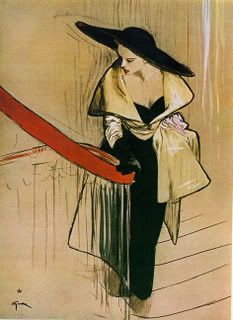
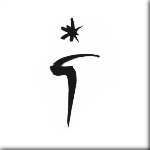
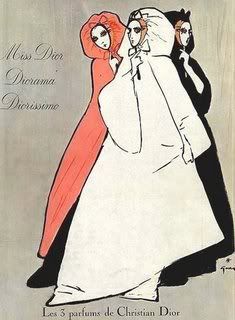
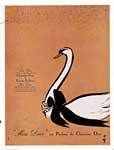
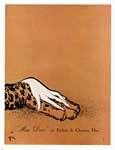
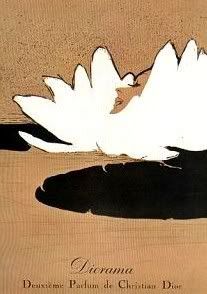

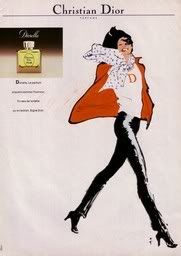
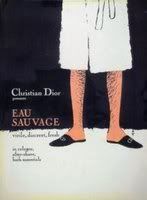
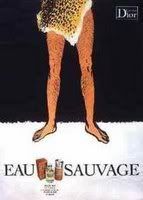

.jpg)

